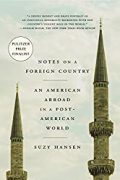
Rating: 8.2/10.
Book by journalist and son of scrapyard owner. Americans think of recycling as an environmentalist act, but in reality it’s more like harvesting valuable materials out of what would otherwise be trash. Metals like copper, steel, and aluminum are harvested from all kinds of things like Christmas lights, cables, cars, etc. It’s a lot cheaper and takes less energy to harvest metal (copper is worth a few thousand dollars a ton) from used items than to mine it from ore, which would take 100 tons to produce one ton of metal.
There is an international trade for scrap metal. America is the biggest producer of scrap, and it gets sent to China because of the cheap labor and China has a lot of demand for metal to build its developing infrastructure. There is an imbalance of trade where a lot of goods are exported from China to North America, and not the other way around, and the ships must go back, so it’s very cheap to ship scrap to China, compared to other places like India or Africa. The trade then goes into secondary markets where all kinds of scrap are defined by quality and sold to the highest bidder, there is little concern for morality or politics. The free market with economic incentives is much more efficient at recycling than citizens with good intentions.
Plastic is difficult to recycle profitably because its value per ton is so low compared to metal. For some time, plastic recycling was done in Wen’an, but it was only possible because there was no environmental regulations and the workers didn’t wear protective equipment when handling dangerous chemicals. The government shut it down after people started getting sick. It’s more costly to recycle while complying with regulations, which is why very little of it is done in the US, but the scrap is simply exported to countries with weak oversight.
Often you have the choice between building a machine to do something (like sort different metals), or hire humans to do it. It all comes down to price: one chapter shows a contrast where the same sorting task is done by hundreds of young women in China and a complicated machine in America. Labor is getting more expensive in China with its rising middle class, so this will soon change. Generally, humans are more efficient than machines, and the poorest places are the best at recycling as there’s more incentive to extract as much value as possible.
Re-use is more efficient than recycling, for example in the used electronics market. Used phones and computers can be sold to the developing world, but they quickly become completely obsolete in a few years. Parts like chips and screens can be taken and made into a new product. As a last resort, chips can be melted down to recover their gold and other precious metals.
In the developed world, we have a misguided idea of how recycling works, and often we think of recycling as a “free pass” that allows us to consume as much as we want, as long as we recycle. In reality, recycling is imperfect and it will be turned into a lower-grade product; in the “reduce, reuse, recycle” mantra, reducing consumption has far bigger impact, reusing is good, and recycling is a distant third option. We should not feel bad about “dumping” scrap on other countries, the Chinese don’t think of it that way, and view scrap imports as a wealth of resources. If it weren’t for exports, a lot of it would have ended up in landfills anyway.



